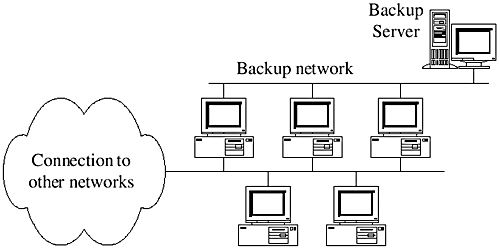36.1 Routine Uses of a Network
| |
HP-UX uses the network connection to perform many useful tasks in daily routine life. You are already familiar with these tasks . Some are listed here just for a review.
SD-UX Server
In a network having several HP-UX nodes, you have to install applications and patches released by the Hewlett-Packard Company from time to time. These applications and patches are installed from a software depot. Using a network, you can create a software depot on a central software server. After creating the software depot on this server, you can use swinstall command to install any software from that server. The following swinstall command gets a software list from the /var/spool/sw software depot located on host myhp .
/usr/sbin/swinstall -s myhp:/var/spool/sw
Network Printing
Network printing is another useful way of sharing resources. Sophisticated and high-speed printers are costly. By using a network, you can share these printers among users. You have already learned how to set up remote printers in Chapter 21.
A Standard Environment for Users
Many corporate networks may need to provide a consistent environment to all users no matter which workstation or server they log into. A user should be able to use the same login name and password and get the same home directory and files everywhere. This is done by using NIS and NFS together. A central file server is set up that has all users' home directories. NIS is used to provide the same login names and passwords on a network, while NFS is used to mount home directories from the central file server. A typical example of such a system is a campus-wide network in educational institutions where students can log in anywhere on the network.
Time Synchronization
In business applications and databases, time stamps are used with many transactions. It is important that all hosts on a network have the same clock time to ensure the proper order of data records. The time synchronization is facilitated by using Network Time Protocol (NTP), where you can use one or more standard time servers on the Internet or local network to synchronize the clocks of all hosts on the network.
Network File System
The network file system (NFS) is used to share disk resources among hosts on the network. Not only does it provide convenience for sharing files among network users, it is also cost effective as data storage. If user data are located at a central place, they are more convenient to back up and restore.
Backup and Recovery
A major advantage of a network is to carry out the routine system administration task of system backup. In the absence of a network, you have to plan and implement a separate backup strategy for every host. Using a network connection, a central backup server can be set up that can use any of the backup facilities discussed in Chapter 23 to create backup and to restore data.
The backup process generates heavy network traffic. Usually network backups are scheduled for nighttime, when there is less network activity, to avoid congestion on a network. However, if the network is busy around the clock and the backup process degrades network performance, a separate network for creating backup may be installed. All hosts that take part in the backup process have an additional network interface adapter connected to the backup network segment. The backup server is also connected to the backup network segment. The backup server uses this segment for data transfer while other network segments continue to function as usual. This scheme is shown in Figure 36-1, where a backup server and three other hosts are connected to a backup network segment.
Figure 36-1. Using a separate backup network.

In the case of complex network strategies, you can use additional backup tools. One such tool is HP Omniback II.
| |
| |
| Top |
EAN: 2147483647
Pages: 390